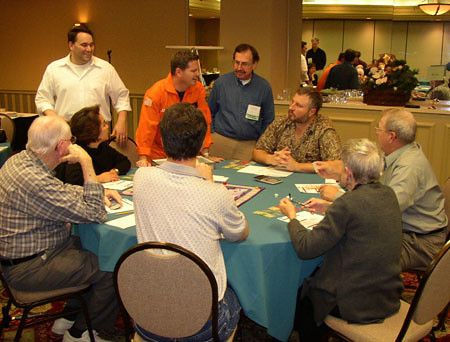Seth Godin is perhaps one of the most widely read marketers in the world, and with good reason. His long string of best-sellers have been pushing the envelope in marketing for decades.
Today we’ll extract some key lessons from his hit “The Bootstrapper’s Bible,” and apply them to your personal branding efforts. In the simplest terms, bootstrapping means doing a lot with a little. It’s the philosophy I’ve used from day one with my business: getting the most bang for your buck, especially when you start out with almost nothing. Let’s see how Godin’s bootstrapping tips can make the time you spend on personal branding pack more of a punch.
Bootstrapping tips
1. Stop planning and start doing. Get out there and do it. The more you do, the more you do. Doors will open. Opportunities will appear. Your model will change, your reputation will increase, you will become a magnet for smart people. But none of this will happen if you stay inside and keep planning. Pick something on your list and just do it.
2. Position yourself against the brand leader. Be brazen in the way you compare yourself to a leader in your field. Your story should be short, solid, and memorable. Can you be “cheaper than Frito’s” or “faster then Federal Express?” in your specific niche? The more your opponent gets publicized, the more your positioning statement increases in value.
3. Be freakishly persistent. It’s not about what you know or even what you do. Success is about persistence. Set realistic expectations and don’t give up. Never take no for an answer but be respectfully persistent.
4. Associate with winners. Four groups of people will dramatically influence how your business evolves:
- Customers
- Employees
- Vendors
- Peers
An angry customer, vendor, or employee can force you to make concessions you’ll be sorry you agreed to. Line yourself up with the wrong people and your business will grow misshapen.
5. Do favors for free. The best way to find peers is to devote several hours a week doing favors for people. Favors with no intention of being repaid. Do some favors for strangers and some for friends:
- Send someone a relevant newspaper clipping or email message
- Refer business to another company that can handle it better than you
This is how you build trust and goodwill among the people who can help get you where you want.
6. Be a connector to establish a strong peer group. Connect with people by connecting them to each other. A few hours a week will net you a group of 100 or more peers who will benefit from your efforts as much as you’ll benefit from theirs.
Check out your local chamber of commerce, local CEO club, or start one yourself.
Do the following to strengthen your group:
- Find opportunities to brag about and compliment other companies and people you know
- If you interview someone who’s terrific but not for you, send that person to a peer (you just made two friends!)
- If you write an article and need a case study, ask a peer to contribute
- If you deal with a business and you’re happy with the experience, write a letter to the president and, founder to founder, let her know how she did.
Be sure to join one that’s as upbeat and enabling as you are. You need to surround yourself with people who have succeeded and are still enjoying the ride.
7. Partner and work with biggger brands (people or companies). Create a mutually beneficial relationship with bigger, richer, more stable organizations. You can make money faster, open access to resources, and generate credibility.
Many big-company founders hate what their company has become. They rail against the slowness, bureaucracy, and inability to get anything done anymore. What they need is someone like you who can take on a specific task and turn company assets into gold. You’ll be amazed at how easily you can license a brand name or do deals for ad space or take over projects for a big company. Sometimes they’ll pay up front, just to maximize the chance of success.
You’d be amazed at all the products that aren’t made by the companies you think make them. Fisher-Price glasses. Flintstones vitamins. Corporations large and small are eager to find bootstrappers who can turn their wasting assets into cash.
With these seven tips, you’re well on your way to getting the most bang for your buck with your personal brand. What time-effective personal branding tactics do you use that embody Godin’s bootsrapper mindset?
Author:
Pete Kistler is a leading Online Reputation Management expert for Generation Y, a top 5 finalist for Entrepreneur Magazine’s College Entrepreneur of 2009, one of the Top 30 Definitive Personal Branding Experts on Twitter, a widely read career development blogger, and a Judge for the 2009 Personal Brand Awards. Pete manages strategic vision for Brand‐Yourself.com.













